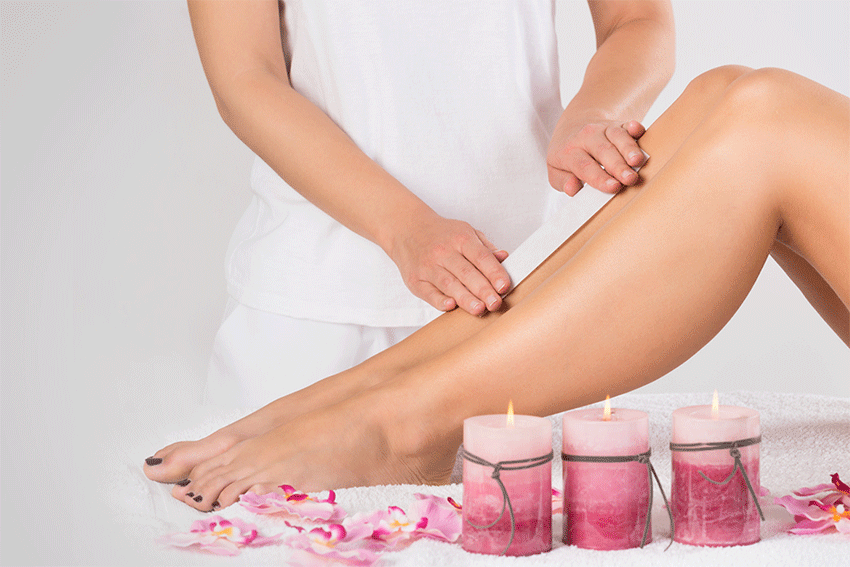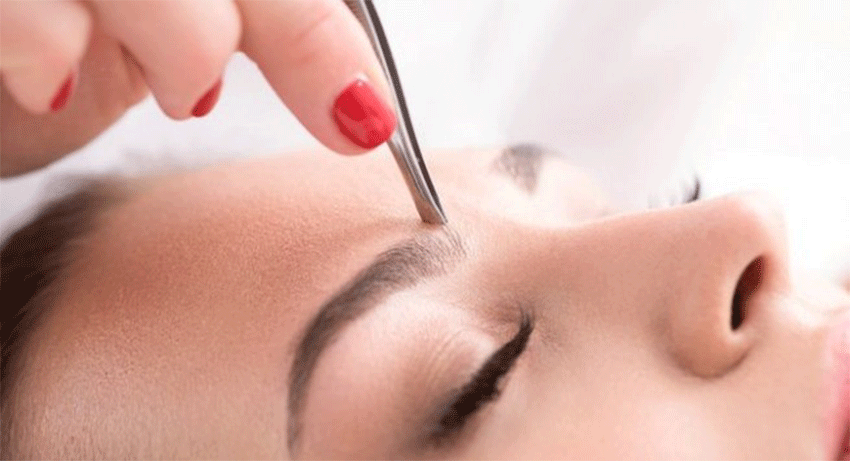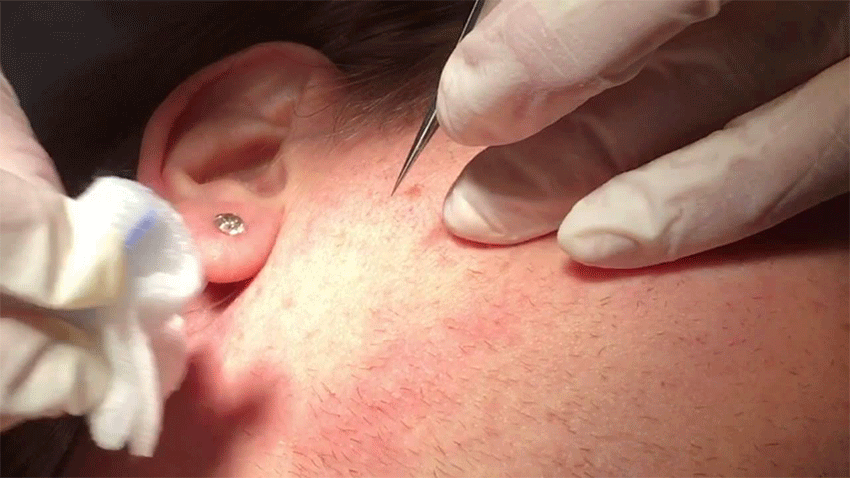
Waxing
Waxing is a quick and easy method of removing unwanted hair from any area on the body. There are two types of waxing, warm and hot.
Warm wax is naturally derived honey wax and comes in a honey or cream consistency. It is heated to the required temperature in a thermostatically controlled heater. The skin is cleansed, dried, and dusted lightly with talcum powder. The wax is then applied with a disposable wooden spatula, or rolled on using a specifically designed roller, in the direction of the hair growth. A linen or paper strip is then placed over the waxed area and pressure is applied to ensure the wax and hairs stick to the strip. The strip is removed quickly, pulling it against the direction of the hair growth. In order to minimise discomfort, the skin is stretched away from the direction of pull.
Hot waxing uses wax heated to a higher temperature than warm wax. The skin is prepared as in warm waxing and the wax is applied with a spatula, against the hair growth in circular motion. The wax then cools and hardens and pressure is applied to it with the therapist’s hand to ensure all the hairs are stuck to it. The end of the piece of dried wax is flicked up and it is removed quickly against the direction of hair growth. Once again the skin is stretched away from the direction of pull. Waxing is recommended every 4 – 6 weeks to allow the majority of hairs to come through and for them to be of sufficient length to be able to be waxed.

Threading
This is a hair removal technique that hails form India. A piece of cotton is wrapped round the therapist’s fingers and held steady between the teeth and is then pulled back and forth along the area where hair removal is required. It is most commonly used on the eyebrows and facial hair.

Tweezing
Used to thin and shape the eyebrows and help open the eyes and give definition to the face.

Laser Hair Removal
There are many different types of laser machines, but they all essentially use light to kill the growing hairs. It can be quite painful, likened to having an elastic band flicked against your skin. A series of treatments is required. Larger areas, such as full legs, can be treated aswell as smaller areas such as the face, underarm, or bikini line.

Permanent Electrolysis
Electrolysis uses an electrical current to kill the hair producing cells at the base of the hair follicle. The skin is cleansed and dried and then a very fine (same width as the hair) sterile needle is inserted in to the hair follicle and a current is released killing the cells with heat. There are other types of electrical current that use a combination of heat and chemical changes in the skin’s tissues. Electrolysis is most often used for fine facial hair, but it can be used anywhere on the body where permanent hair removal is required. It is impossible to give an accurate prediction as to how many and how often treatments are required as many factors, such as density of hair, number of hairs and client’s skin sensitivity, all have a bearing on this.